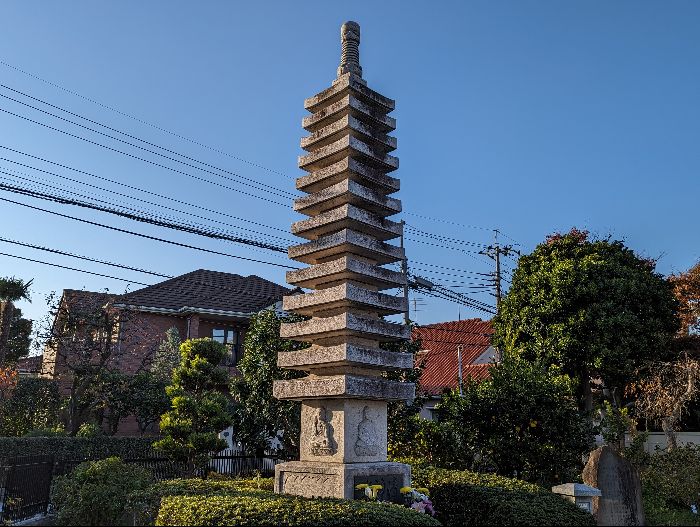Shimenawa or sacred straw ropes of shrines in NISHIOGI.
They are hung at various places such as an entrance gate called “torii” and a worship hall.
Shimenawa are used to indicate the boundaries within which are sanctuaries and protect buildings or objects from the profaneness.
The ropes are usually made of dried rice plants before coming into ear. There are various kinds of shapes such as “radish-shaped shimenawa” the central part of which is very fat and “burdock-shaped shimenawa” the thickness of which becomes gradually narrower toward the end of the rope. Conventionally, “kamishide” or zigzag-shaped white paper strips and “shimenoko” or tuft-shaped decorations are suspended from the festoon.
The ways of twisting and decoration of shimenawa vary, too. They are usually twisted clockwise and decorated from right to left facing the objects; this is in accordance with the traditional belief that from the religious viewpoint the left means sacred, whereas the right means profane.
In Sumo wrestling, the national sport of Japan, grand champions called “yokozuna” wear “radish-shaped shimenawa”, when they perform “dohyo-iri” or ring-entering ceremony before the beginning of the bouts.
注連縄(しめなわ)
西荻の神社の注連縄。鳥居・拝殿等各所に掛けられている。
注連縄とは、神聖な場所にかけわたし、内と外を隔てて、不浄に触れさせないための印とする綱のこと。
通常、出穂前の稲を乾燥させたものを材料とする。形状は多種あり、春日神社や松庵稲荷神社等に見られる「大根注連」(中央部が非常に太いタイプ)、伏見稲荷神社に見られる「牛蒡注連」(牛蒡のように締めた縄の片側が細くなるタイプ)などが代表的。そして、両端の間に「紙垂(かみしで:聖域を示す象徴)」、「〆の子(しめのこ:房状の藁の装飾)」と称するものを複数挟み込んで垂らす。
縄の綯(な)い方や取り付け方も一様ではない。綯い方については、神前や神事の場に設けるものは、通常、左綯いとされる。また、取り付け方は、向かって右に縄の根元を置き、穂先の部分を左にかけるのが一般的(日本一巨大な「大根注連」を誇る出雲大社では逆)。これは、古来、神様サイドから見て左=聖、右=俗とする考え方から来ているとの説あり。
なお、日本の国技である大相撲における現在の最高位・横綱が、「横綱土俵入り」の際、化粧まわしの上に着ける綱も注連縄である。

